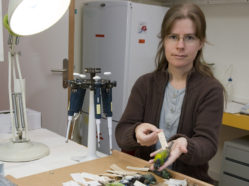#GlobalAOS: Alice Cibois
This July and August, we’re running a special series of blog posts profiling AOS members around the world, in honor of the recent change to AOS’s bylaws eliminated any reference specifying the Western Hemisphere as the Society’s geographic sphere of influence. This week, meet Alice Cibois, a researcher at a museum in Switzerland. What’s your current job …

